Editor’s Note: This post was originally published on March 13, 2018 and was updated for accuracy and comprehensiveness on April 5, 2024.
With rising acquisition costs and fierce competition, more ecommerce brands are feeling the need to start their own rewards program. With easy-to-understand structures and simple earning and redemption models, points programs are by far the most popular type of rewards program. The biggest question for most people, however, is where to begin.
Follow our 7 simple steps, and you’ll get more repeat customers than ever with your brand-new points program.
Table of Contents:
- Step 1: Set goals for your loyalty program
- Step 2: Determine how customers earn points
- Step 3: Choose how you will reward your members
- Step 4: Decide on the value of your currency
- Step 5: Brand your loyalty program
- Step 6: Launch and advertise your program
- Step 7: Never stop improving
- How to create a loyalty points program (by your business size)
Set goals for your loyalty program—decide the type of program you will launch and its success metrics. Determine the types of rewards and how customers will earn rewards. This will be key in showing customers why they should engage and become part of your loyalty program.
The value of your points currency is critical in ensuring your loyalty program is profitable while also being generous to your customers.
A successful loyalty program is well-branded and becomes just as recognizable as your business.
Launch your program and promote it on your channels to ensure both existing and new customers engage.
Constant optimization and continuous experimentation result in learnings that you can apply to make sure your program effectively builds customer loyalty.
Step 1: Set goals for your loyalty program
A ship with no compass will end up going in circles. The same is true for loyalty programs—set a concrete goal before embarking on your journey to ensure you actually reach your destination.
If you don’t know why you're implementing a loyalty program, it likely won’t be successful. All loyalty programs have one thing in common—they are a customer retention tool aimed at increasing repeat customers. This is because repeat customers are more profitable in the long run. It’s estimated that 35% of an ecommerce store’s revenue is generated by the top 5% of customers.
However, every loyalty program can differ in how it accomplishes this goal and what additional metrics it prioritizes. Use metrics to benchmark your progress because they are easily measurable. Determine how much you want to increase your repeat purchase rate, average order value, or purchase frequency to make sure your rewards program stays on track.

Step 2: Determine how customers earn points
After you’ve set your goals, determine how customers will earn points towards rewards in your loyalty points program. It’s essential to give your members various options for how they can earn points. This will keep members engaged and encourage them to explore more of your brand beyond your loyalty program.
The best way to engage your customers is by rewarding them for actions that make sense for the type of shopper they are. What are they likely to engage with? How do they interact with your brand? A great example of this thinking in action is in the beauty and cosmetics market.
As an industry that relies on social proof and visual product demonstrations, many beauty brands reward customers for social media interactions or photo and video reviews. Clearly, rewarding for more than just purchases is important!
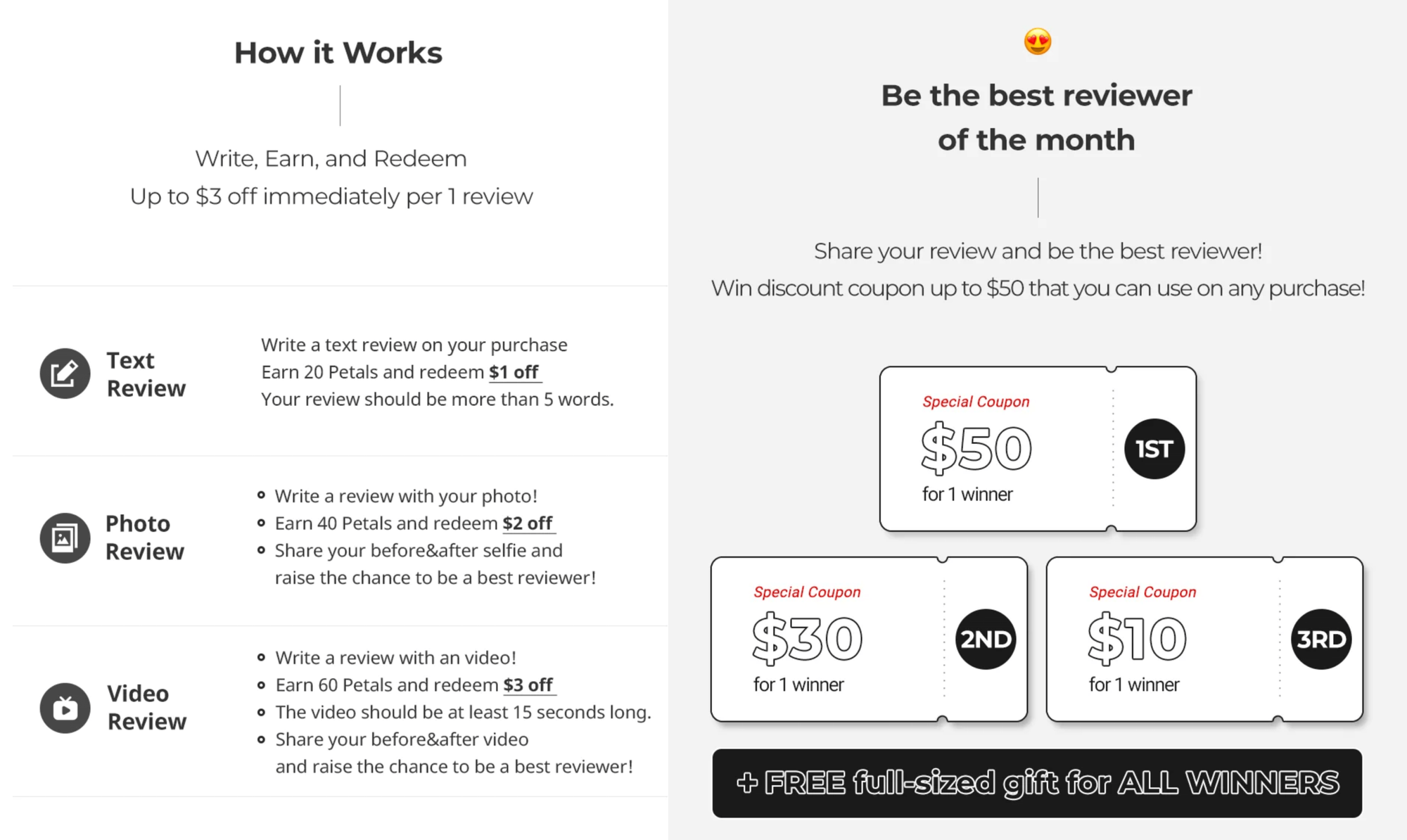
April Skin rewards its customers for leaving reviews, with additional loyalty points available for photo or video reviews. This type of user-generated content is invaluable for a brand where customers want products that will get them results in their skincare goals. April Skin incentivizes reviews even further through unique “best reviewer of the month” rewards, such as $10-$50 off coupons and free products. Earning points for simply sharing their experience will motivate customers to interact with the brand more often, meaning April Skin keeps them as a customers for a longer period of time!
Reward your customers for the following actions to maximize the effectiveness of your loyalty program:
- Setting up an account.
- Celebrating a birthday.
- Making a purchase.
- Engaging with your store on social media.
- Reviewing a product.
Frustrated with its former loyalty program’s engagement rates and price, Dr. Sam’s decided to make the switch to Smile.io. Dr. Sam's saw immediate value by pairing its new referral, points, and VIP programs with a well-branded email campaign powered by Klaviyo.
Step 3: Choose how you will reward your members
Selecting the type of loyalty points rewards you will offer is one of the most important steps because they are the primary motivator for your customers to earn points in the first place. Don’t make the common mistake of thinking that customers only want to earn points—rewards are what actually motivate them!
Offer your customers a healthy variety of rewards to choose from to maximize the probability that they will see them as desirable. Put yourself in their shoes—would you stay in a loyalty program that gives you 5% off coupons as a reward, even though they regularly run 25% off events? Of course not! You would see very little value in a program with that points rewards structure.
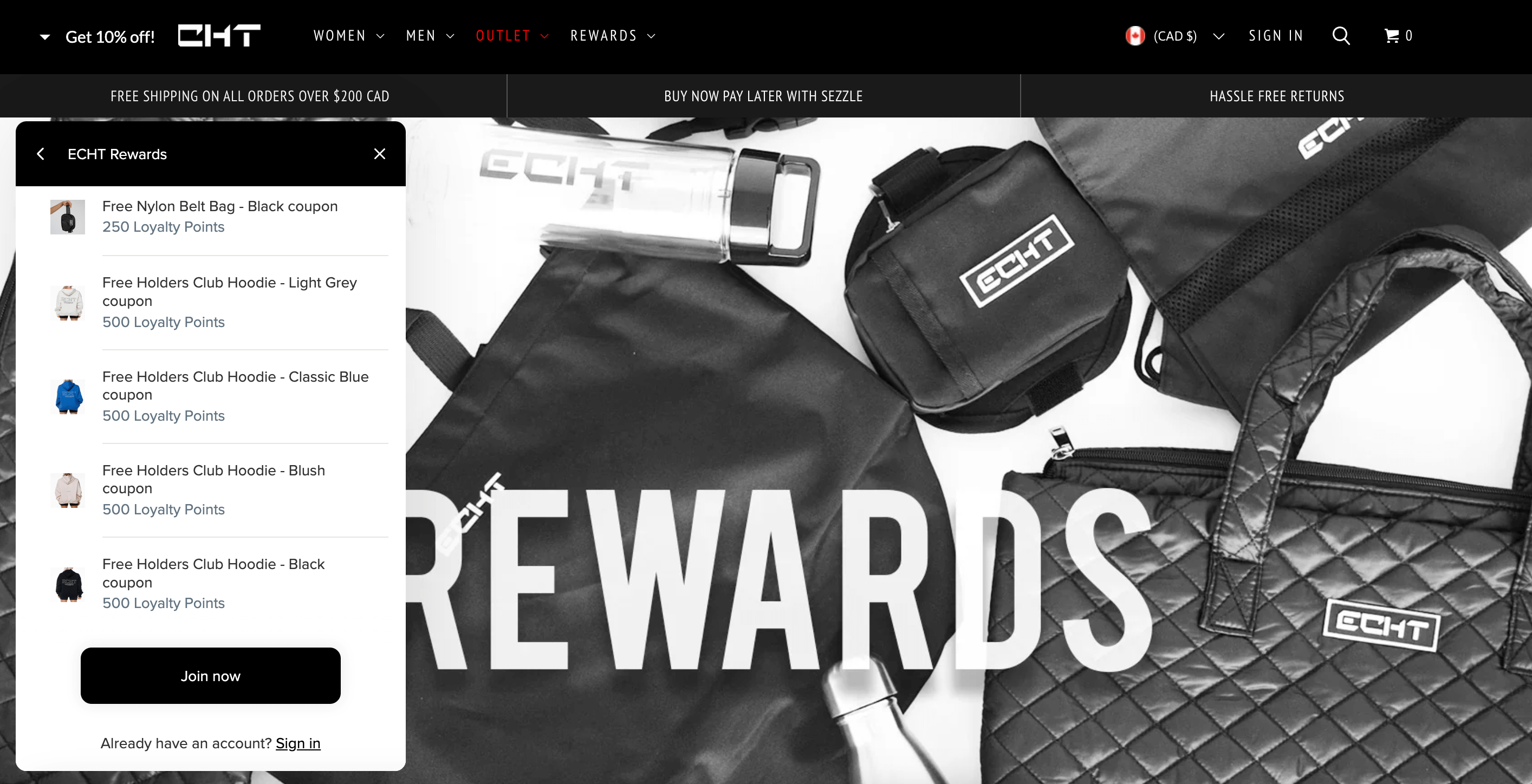
Australian fitness apparel brand, Echt understands that its customers are looking for high-performance gear to improve their workouts and identify them visually as part of the brand community. As a result, it offers exclusive access to branded workout gear and accessories that customers can’t simply buy from the store. This allows Echt to please every single customer who shops at its store, from the one looking for a trendy belt bag to the one looking for a hat to keep everything in place during their intense workout.
Get your customers motivated to earn points by offering these rewards:
- Free products.
- Free shipping.
- Dollars-off discounts.
- Percentage discounts.
- Gift card rewards.
- Experiential rewards.
Make your loyalty points program irresistible by offering valuable rewards that customers cannot pass up.
Step 4: Decide on the value of your currency
The value of your loyalty points currency determines whether a customer will stay in your program or not. You can offer many ways to earn points and desirable rewards, but if it requires thousands of dollars in purchases over multiple years to claim a single reward, it’s unlikely anyone will remain a member of your program. A good rule of thumb is to make it possible for customers to redeem their first reward after 1-2 purchases.
The key is to strike a balance between the cost of points for you and the value of points for your customer. The ideal scenario is to have rewards with a high perceived value that make points feel beneficial but have a low actual cost for you. This will ensure customers are driven to actually earn points, redeem rewards, and ultimately remain loyal to your brand.
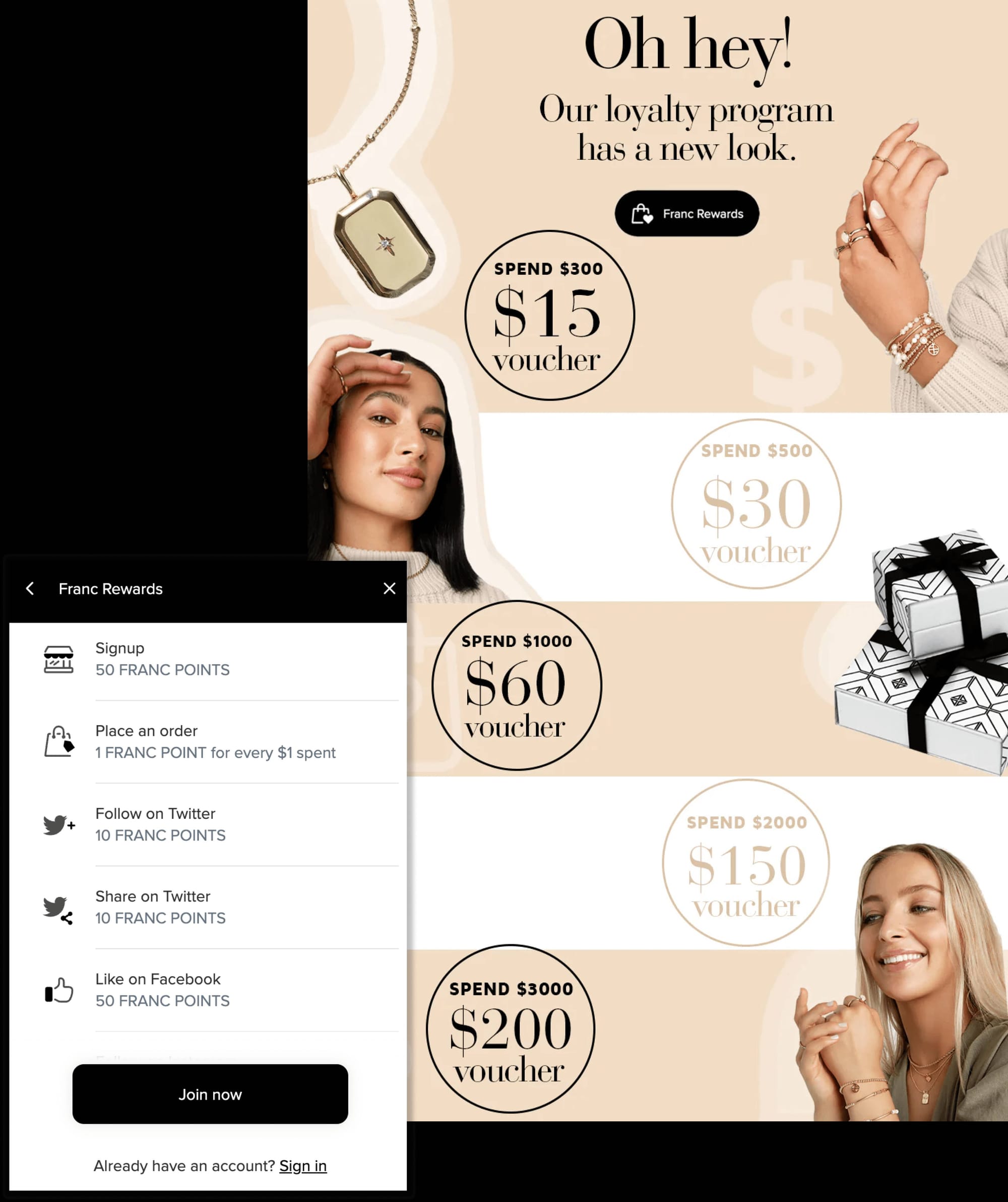
Australian jewelry brand Francesa has configured its loyalty point earning and redemption levels perfectly. With generous sign-up and social media bonuses, customers can earn up to 220 points before making a purchase,nearly 75% of the points needed to reach that first $15 discount valued at 300 points. Since every dollar spent equals 1 rewards point, customers will likely only need to make 1 purchase before hitting that first reward.
After that, customers can choose to cash in or save their points for a higher discount. Either way, Francesa has valued its loyalty points currency in a motivating and exciting way for customers without causing too much financial strain on them as a business.
Remember, you want your customers to be earning rewards—that will truly drive brand loyalty.

Step 5: Brand your loyalty program
Branding your loyalty program makes it feel connected to the rest of your store and easy to remember, and there’s one ecommerce brand that perfectly connects its brand to its loyalty points program, Tushy.
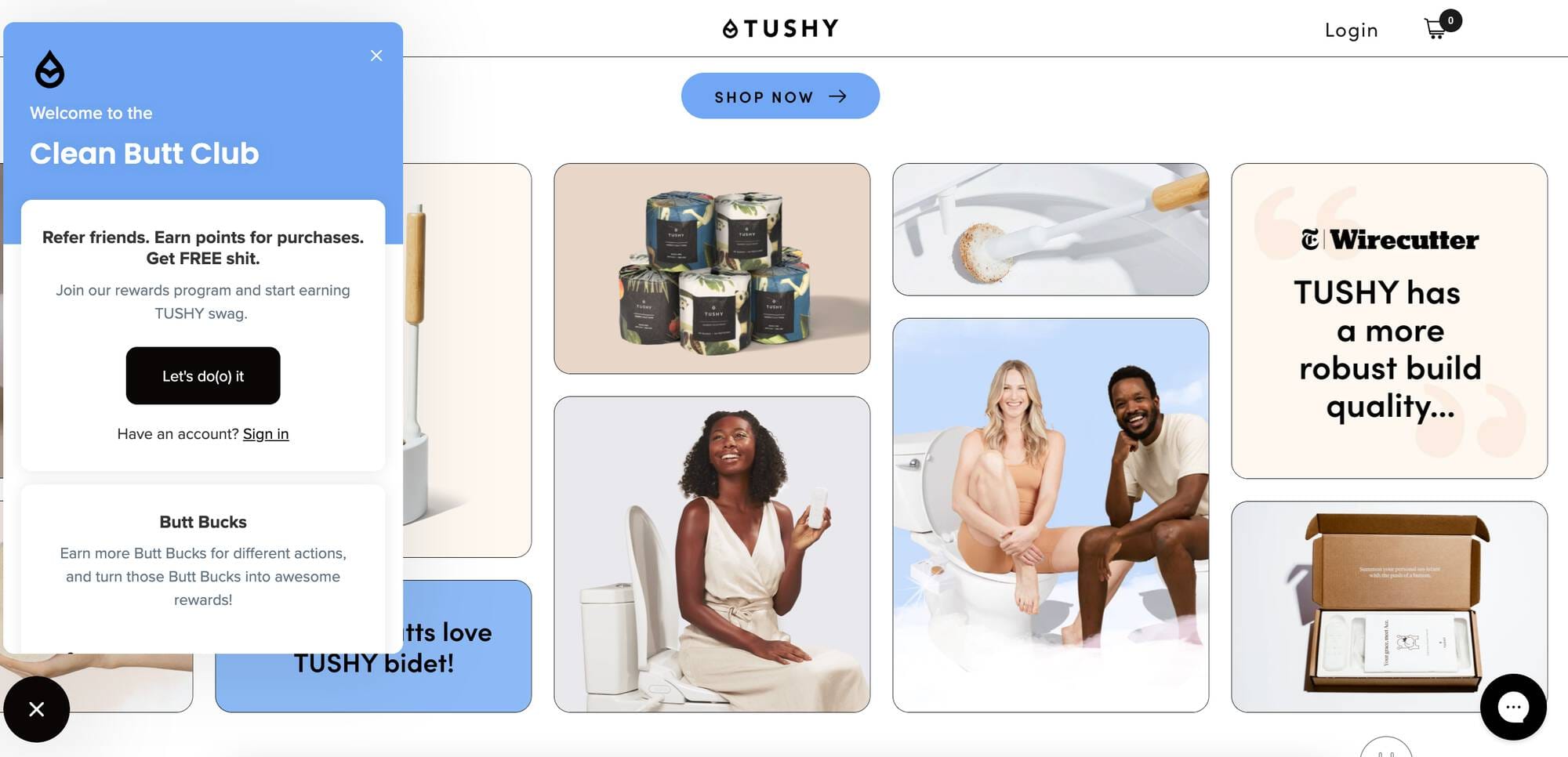
Tushy is “the modern and sustainable bidet company,” that has created an entire brand around the most common human thing we all do. From its branded imagery to its branded copy, Tushy has crafted a well-recognized brand for its industry. Its loyalty points program, the “Clean Butt Club,” is the perfect blend between being part of the brand itself and having its own identity.
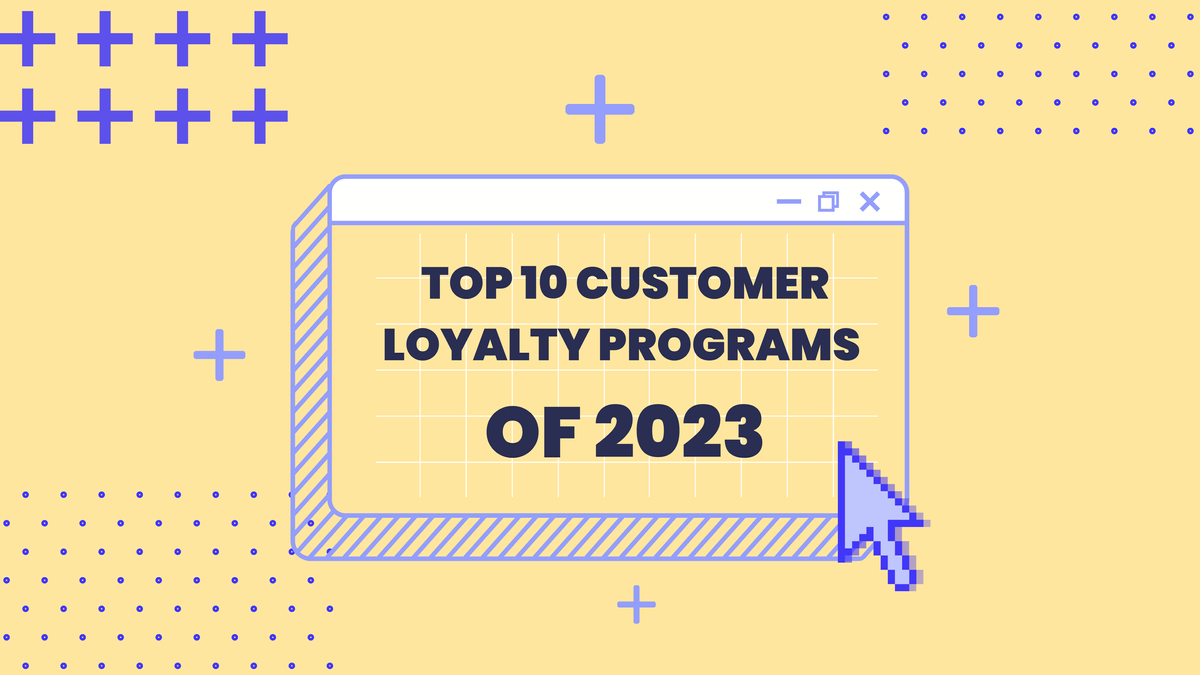
From branded icons to the name itself and to the loyalty points currency name, “Butt Bucks,” Tushy knows its audience and what they want to convey to them. Paying attention to these types of details will make sure that your rewards program is the one that stands out in your customers’ minds. From your loyalty program name to the way you design your explainer page, creating a memorable loyalty experience will allow you to create a program that breaks through the noise.
Use these strategies to get your customers coming back again and again:
- Give your program a memorable name.
- Call your currency something catchy.
- Stylize using familiar colors.
- Add graphics that complement your loyalty program.

Step 6: Launch and advertise your program
You’ve come this far and now have a great loyalty rewards program ready to go live, but don’t forget that you need to actually tell people how great your program is! If customers don’t know it exists, how can they get excited to participate?
Creating an explainer page is a great way to tell people about your program. This standalone page uses visuals and short text to demonstrate how customers can earn and spend points in your rewards program.
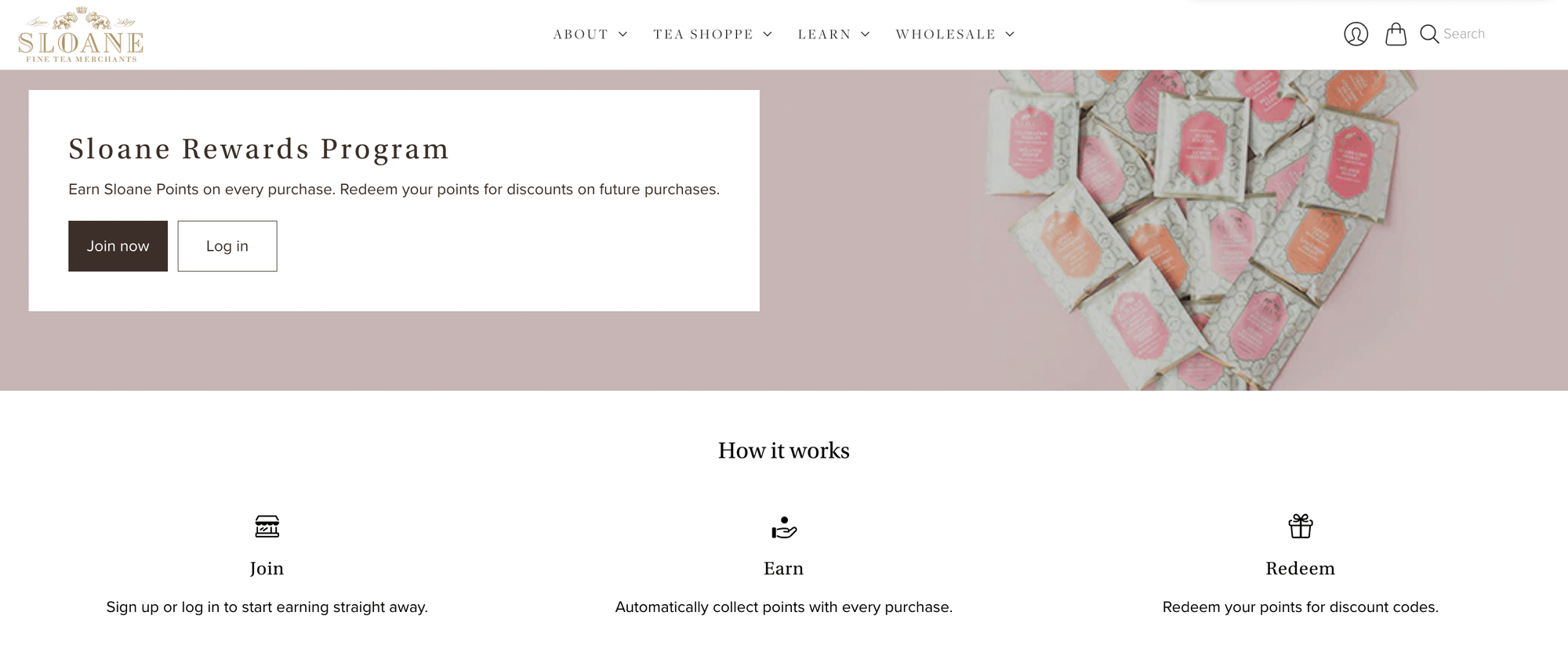
By looking at Sloane Tea’s explainer page built with Smile, we understand everything there is to know about their program in seconds. Creating an explainer page is extremely beneficial in convincing new customers to join because no one is going to join a confusing program and sift through the fine print to figure out how it works.
With several embedded loyalty elements on its ecommerce site, from a dedicated loyalty landing page to points redemption at checkout, Sloane Tea has leveraged loyalty in a big way. Sloane Tea ran a bonus points campaign that generated +370% in daily sales in just 24 hours. Learn more from Sloane Tea and how they did this.

Social media is another great tool for loyalty points program marketing. Whether you’re announcing your points program for the first time or promoting a bonus points event, it’s good to leverage the channels you’re already speaking to customers in. The best marketing channels will depend on your brand and your customers, but explainer pages, emails, and social media are all great places to start.
Ensure your rewards program is successful by following these steps:
- Build an explainer page that illustrates how to earn and spend points.
- Launch your program and address early customer feedback.
- Send an email to your customers letting them know you’ve launched.
- Promote the loyalty program on social media.
Step 7: Never stop improving
As much as you might wish otherwise, a rewards program is not a set-it-and-forget-it revenue-generating mechanism. Constant optimization and experimentation are key to success.
Continuously experimenting with your rewards program will ensure it’s better tailored to your customers and ensure there is high customer engagement with your program. This experimentation can take any number of forms, but the ones we’d highly recommend would be event-based marketing initiatives like bonus points events. This type of campaign encourages customers to get even more engaged and keeps your program feeling fresh and exciting.

In the months following the launch of your rewards program, it becomes very important to learn what your customers are responding well to. Your loyalty program is a great feedback tool, and you can continuously experiment with it through things like A/B testing or feedback surveys. You can boost engagement in the beginning by offering new rewards and new ways to earn points or bonus points.
How to create a loyalty points program (by your business size)
Depending on your ecommerce business size, building a loyalty points program will follow a similar structure, just with different loyalty elements in your loyalty points program.
Growing businesses:
- Offer immediate value—let customers redeem a reward after 1 or 2 purchases to familiarize them with your loyalty points program.
- Incorporate bonus points to invite customers back to shop with you while earning more points.
- Ask your customers for early feedback. Ask about the type of rewards and earning structure they would like to see from your loyalty program.
High-volume businesses that use Shopify Plus:
- Embed loyalty content throughout the customer journey. Add elements like points on the product and account pages, points redemption at checkout, and SEO-friendly loyalty landing pages.
- Incorporate VIP tiers into your loyalty program.
- Reward meaningful rewards that customers want to earn.
Smile.io is the most trusted loyalty platform by Shopify Plus merchants because loyalty points programs built with Smile.io have generated revenue and repeat customers for ecommerce brands.
One key element high-volume businesses incorporate into a loyalty program is embedded loyalty content throughout the customer journey. With Shopify’s checkout extensibility and Online Store 2.0 App Blocks, you can enable customers to reward points directly at checkout and display point information on product pages, accounts pages, checkout, order status pages, and more. This keeps your program right in step with where your customers are at.
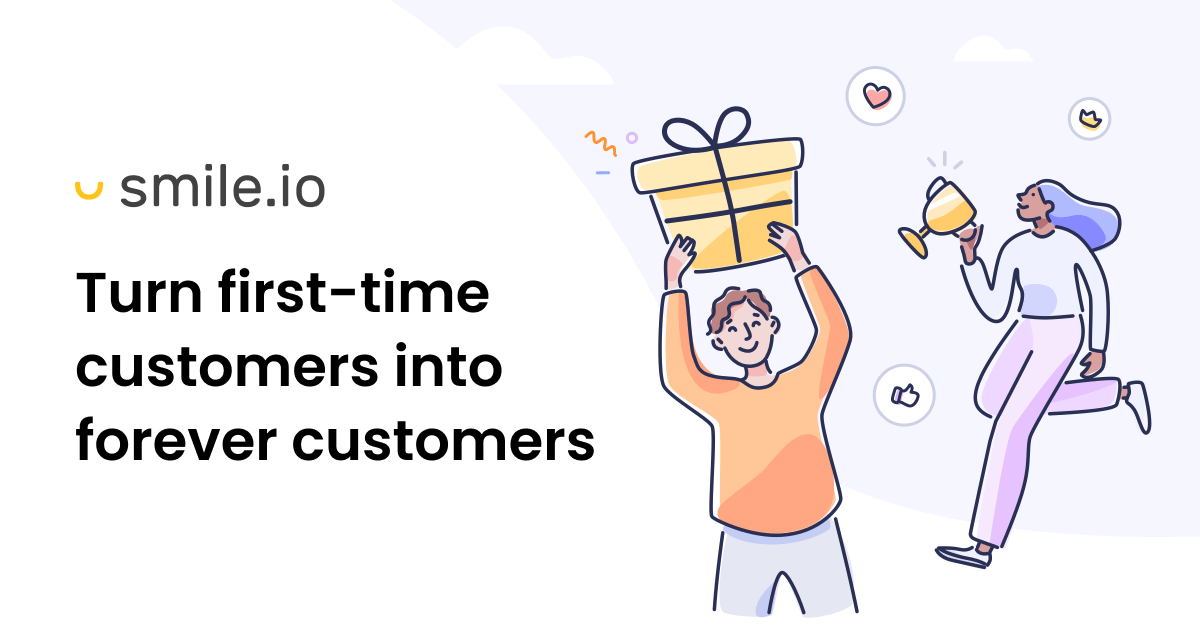
Another way high-volume businesses create a loyalty program is by adding additional VIP tiers to their loyalty points program to encourage customers to move up to a more desirable status. The higher you move in a VIP tier, the more rewards you can unlock. Additionally, high-volume businesses that utilize VIP tiers, increase how much a loyalty point is worth.
For example, in a standard points program, you can reward customers 5 points for every dollar spent. If that same customer is in the top tier of your VIP program, that same point is worth 10 points for every dollar spent. The idea is to incentivize repeat purchases even further.
It’s more important than ever to launch your points program
We know that the cost to acquire new customers is increasing, so it’s more important than ever to shift your focus to retaining the customers you already have. This will allow you to bring in additional revenue by keeping your customers more engaged with your brand and making it tougher for them to switch to your competitors.
Simply following the 7 simple steps we’ve laid out will get your points program up and running, with the opportunity to improve it over time. Not every rewards program is perfect from inception; yours doesn’t have to be either! The key is simply getting started!









